Printing Booklets: 5 Popular Types of Binding for Booklets

estimated reading time: 8 minutes
Booklet Binding Types
When it comes to printing booklets for your business or
organization - whether it's a promotional brochure, product catalog, instructional
handbook, event program, or something else - how you bind the pages and cover together
is more than just a finishing touch. The type of binding you choose affects not
only the look and feel of your booklet but also its functionality and cost.
With several different binding options available, it can sometimes
be challenging to determine which method is best for your booklet. So in this
article, we'll discuss five of the most popular binding methods, outlining
their features and benefits to help you decide which binding type is the right
fit for your particular project.
1. Saddle Stitch Binding
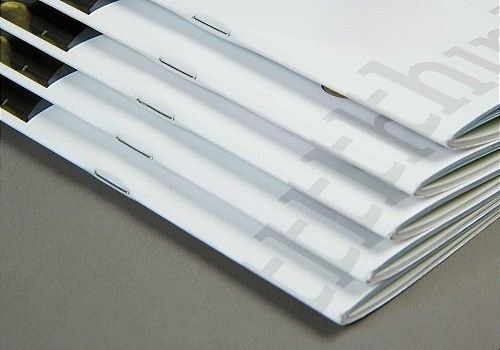
What is Saddle Stitch Binding?
Saddle Stitching is one of the most popular binding methods
used to create booklets. It is also the most economical binding method.
Saddle Stitched booklets are created from printed sheets of
paper that have been folded in half. These folded sheets are nested together
and then wire staples are driven through the collective fold line to form the
booklet's spine.
The staples penetrate through the booklet's cover and all of
the interior sheets. The staples are cinched closed in the centerfold of the
booklet. Two staples are most commonly used but additional staples are
sometimes added to oversized booklets. Each folded sheet creates 4 pages of the
booklet.
The outer cover is also made from a folded sheet. The cover
is usually made from paper that is thicker than the paper used for the interior
pages. That said, some booklets use the exact same paper for the cover and
pages. This is referred to as a "Self Cover" booklet.
Highlights of the Saddle Stitch Binding Method:
- Clean and tidy appearance: Has a simple yet sleek look
- Perfect for thinner booklets: Accommodates lower pages counts
- Good functionality: Pages open fully, no content gets lost in the gutter
- Quicker turnaround: Readily available and ideal for short-run projects
- Cost-effective: One of the most affordable binding options
Saddle Stitch Binding is often used for…
- Brochures
- Thinner catalogs and magazines
- Event programs and guides
- Installation and assembly manuals
- Comic books
- Multi-page wall calendars
- Newsletters
2. Perfect Binding
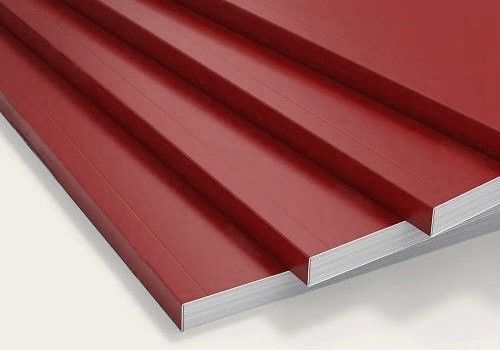
What is Perfect Binding?
Perfect Binding is another widely used method for creating
booklets. Perfect Binding uses a hot-melt adhesive to secure a block of
printed pages within a wraparound cover. Once the adhesive cures, the three
open sides of the book are trimmed to create perfectly straight edges. These
"perfect" edges are where Perfect Binding gets its name.
Perfect Binding is an ideal fit for booklets that have
moderate to high page counts. However, it is not well suited for booklets with very
low page counts because the binding adhesive needs at least 1/8" of
surface area to bond effectively. If the page count is too low, the spine
won't be wide enough to provide enough surface area for the adhesive to secure
the page block to the cover.
The Perfect Binding method not only yields clean and
straight edges, it also produces a flat, printable spine. This is an important
consideration when choosing a booklet binding style, as no other softcover
binding method yields a spine that is flat and printable.
The Perfect Binding process is more involved than the Saddle Stitching process and therefore these books costs a little more to produce.
However, Perfect Binding is still a great value.
Highlights of the Perfect Binding Method:
- Crisp, professional look: Provides a clean and contemporary appearance
- Allows higher page counts: Accommodates hundreds of pages
- Square, printable spine: Can display title, author, and other branding
- Uniform thickness: Stacks neatly on a desk, table, or shelf
- Good Value: Costs a little more than Saddle Stitching but still quite affordable
Perfect Binding is often used for…
- Thicker catalogs and magazines
- Graphic novels and thicker comic books
- Softcover booklets
- Poetry and story booklets
- Employee handbooks
- Technical manuals
- Annual Reports
3. Spiral Binding (a.k.a. Coil Binding)

What Is Spiral Binding?
Spiral Binding, also known as Coil Binding, uses a
spring-like coil that is threaded through a series of holes punched along one
edge of the booklet's pages and covers. After the coil is fully inserted, it is
crimped on both ends to hold it in place.
The front and back covers of a spiral bound booklet are made
as two separate sheets. This is different than the covers of saddle stitched and
perfect bound booklets where the front and back covers are printed on a single
sheet that wraps over the pages.
The vast majority of binding coils used for custom-printed
spiral booklets are made of flexible PVC plastic. These PVC coils are
waterproof, plus they resist abrasion and distortion.
In addition, the coils are available in a variety of
different colors to complement virtually any project. The coils are also available
in a wide range of diameters to accommodate most page counts.
Also, because the pages and cover are able to rotate so
freely around the coil, spiral bound booklets can open to a full 360 degrees. This
feature allows a booklet to lie completely flat on a desk or table without
needing to be held open. This leaves both hands free to perform other tasks
while referencing the booklet's content.
As far as the cost is concerned, Spiral Binding is a bit more
expensive than Saddle Stitching and Perfect Binding but less than Wire-O Binding.
Highlights of the Spiral Binding Method:
- Very user-friendly: Pages turn easily and stay put without needing to be held open
- Binding coils are durable: Stands up to frequent use and rough handling
- Variety of sizes and colors: Spines are available to complement any booklet project
- Can bind on any edge: Booklets can be bound along the side or top edge
- Works well with index tabs: Ideal for booklets that need rapid referencing
Spiral Binding is often used for…
- Workbooks and Study Guides
- Instruction and Maintenance Manuals
- Travel and Field Guides
- Bound Sheet Music
- Cookbooks
- Flip Books
- Waterproof Booklets
4. Wire-O Binding
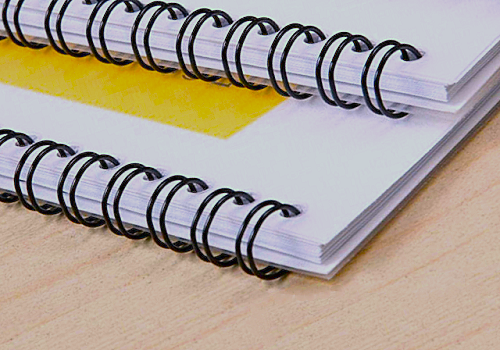
What is Wire-O Binding?
Wire-O Binding functions similarly to Spiral Binding, but
instead of a continuous plastic coil the wire-o method uses a pre-formed spine element
made from metal wire.
The metal wire spine is shaped to appear as decorative pairs
of wire loops once it is installed. This is why the wire-o method is sometimes
known as twin-loop binding or double-loop binding.
Prior to being installed, the loops that run along a wire-o
spine will be wide open. These open loops are inserted through small holes that
have been punched along one edge of the book's cover and pages.
After the pages and cover sheets have been placed within the
open loops of the spine element, the loops are squeezed closed. Squeezing the wire
loops forms them into a perfect circle. This entraps the cover and pages but
still allows them to rotate smoothly around the spine.
Available in a variety of colors and metallic finishes, Wire-O Binding adds a sense of class and sophistication to bound documents. As such, it
is often used for booklet projects that aim to impress, especially those used
in a corporate setting.
Much like a spiral bound booklet, a wire-o booklet can open
fully without the need to be continually held open. Also like a spiral bound
booklet, wire-o booklets can open a full 360 degrees and fold back upon
themselves (cover to cover). This feature not only makes the book more compact
to handle, it also enables the book to take up minimal room while being
referencing on a desk or tabletop.
Highlights of the Wire-O Binding Method:
- Sophisticated look: More refined and stylish than plastic binding coils
- Ease of use: Pages open 360 degrees, booklets can fold back upon themselves
- Great for presentations: Adds a premium feel to reports and meeting materials
- Variety of sizes and colors: Spines are available to complement any booklet project
- Practical functionality: Can bind on any edge, lies flat, and works well with index tabs
Wire-O Binding is often used for…
- Corporate presentations
- Reports
- Journals
- Notebooks
- Planners
- Desktop and Wall Calendars
- Directories
5. Comb Binding
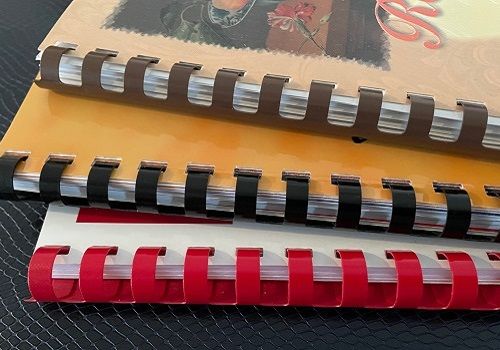
What Is Comb Binding?
Comb Binding is a time-tested binding method. It is
called "Comb" binding because it uses a plastic comb-like spine element. The
spine has a series of tines like a hair comb. But instead of the tines being
straight, they are curved into a circular shape. These pre-formed tines contain
quite a bit of tension, which keeps them tightly closed and helps them maintain
their circular shape.
To comb bind the printed pages and cover together, they are first
punched with a series of rectangular slots along one edge. The curved tines on
the binding element are then spread wide open and inserted through the slots
punched in the book's pages and cover.
The tension in the tines is then released, allowing the
tines to spring back to their original circular shape. This joins the pages and
cover securely together but still allows them to turn freely.
Binding combs are available in several different colors and
sizes. The cost of Comb Binding is comparable to the cost of Spiral Binding…pricier than Saddle Stitching and Perfect Binding, but less than Wire-O Binding.
Highlights of the Comb Binding Method:
- Readily available: Simple binding system that offers quicker turnaround
- Editable: Pages can be added or removed by reopening the tines
- Variety of sizes and colors: Spines are available to complement any booklet project
- Works well with index tabs: Good for booklets that need quick referencing
- Opens 180+ degrees: Can't open a full 360 degrees but will still lie flat when open
Comb Binding is often used for…
- Workbooks
- Product and Price Lists
- Training Materials
- Informal Reports
- Short-run Cookbooks
- Employee Handbooks
Final Thoughts: What's the Best Booklet Binding Method?
When it comes to booklet binding, there's no
one-size-fits-all answer. The best binding option will depend on your booklet's
content, audience, budget, and intended use. Whether you need a simple manual
for internal use, a flagship brochure or catalog for promotional purposes, or a membership
directory for an upscale country club, understanding the different booklet
binding options will help you make the right decision.
Are You Ready to Print your Booklet?
Color Vision has been producing quality books and booklets
for over four decades. So if you are looking for affordable printing backed by
friendly, personalized service, be sure to get in touch.
Just give us a call at 800-543-6299 to discuss your project.
Or, if you prefer to communicate online, complete our Quote Request form
and we will be happy to email a custom quote to you.
In addition to offering a variety of booklet binding
options, we also offer a wide array of finishing choices to help your booklets
stand out from the crowd.
As always, we hope to hear from you soon and look forward to assisting with your printing, binding, and finishing needs!
Related Articles

10 Frequently Asked Questions about Spiral Binding
Read This Article

The 5 Most Affordable Types of Book Binding
Read This Article
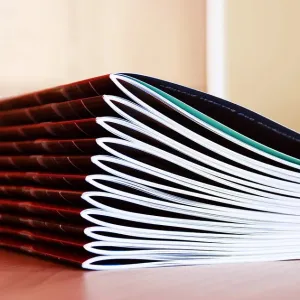
10 Frequently Asked Questions about Saddle Stitching
Read This Article
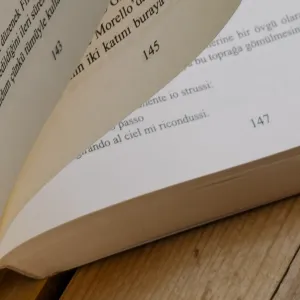
Book Printing: Helpful Advice for Page Numbering
Read This Article